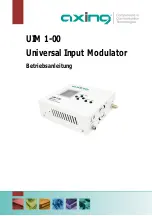
6
Down to One
Junior high school
• • • • • • • • • • • • • • • • • Using the calculator • • • • • • • • • • • • • • • • •
Calculator functions used: Subtraction, division, last answer memory
• • • • • • • • • • • • • • • • • • • • • Objective • • • • • • • • • • • • • • • • • • • • •
Develop a variety of mental methods of computation.
Develop the use of the four operations to solve problems.
Use sequence methods of computation when appropriate to a problem.
Estimate and approximate solutions to problems.
• • • • • • • • • • • • • • • Explanation of the activity • • • • • • • • • • • • • •
Use the calculator to generate a 3-digit random number.
The aim is to get the calculator to display the number
1
.
Players can use any of the numbers
1
– 9 together with any of the keys below:
,
,
,
,
,
,
You cannot put numbers together to make 2- or 3-digit numbers.
You can use each number only once.
The first player to get his/her calculator display to show
1
scores five points.
If after an agreed time limit no player has reached
1
, the player who is closest scores two points.
While working on this activity, students should develop their skills of mental mathematics and their
fluency with numerical calculations.
Suppose the random number you generate is 567.
Example A:
The answer is
1
and the game is finished.
567
9
7
8
Press the following buttons and then start operation.
567
÷
9=
DEG
ANS
÷
7=
DEG
ANS-8=
DEG
Summary of Contents for EL-531RH
Page 1: ...SCIENTIFIC CALCULATOR TEACHER S GUIDE JULY 1999 EL 531RH ...
Page 56: ......
































